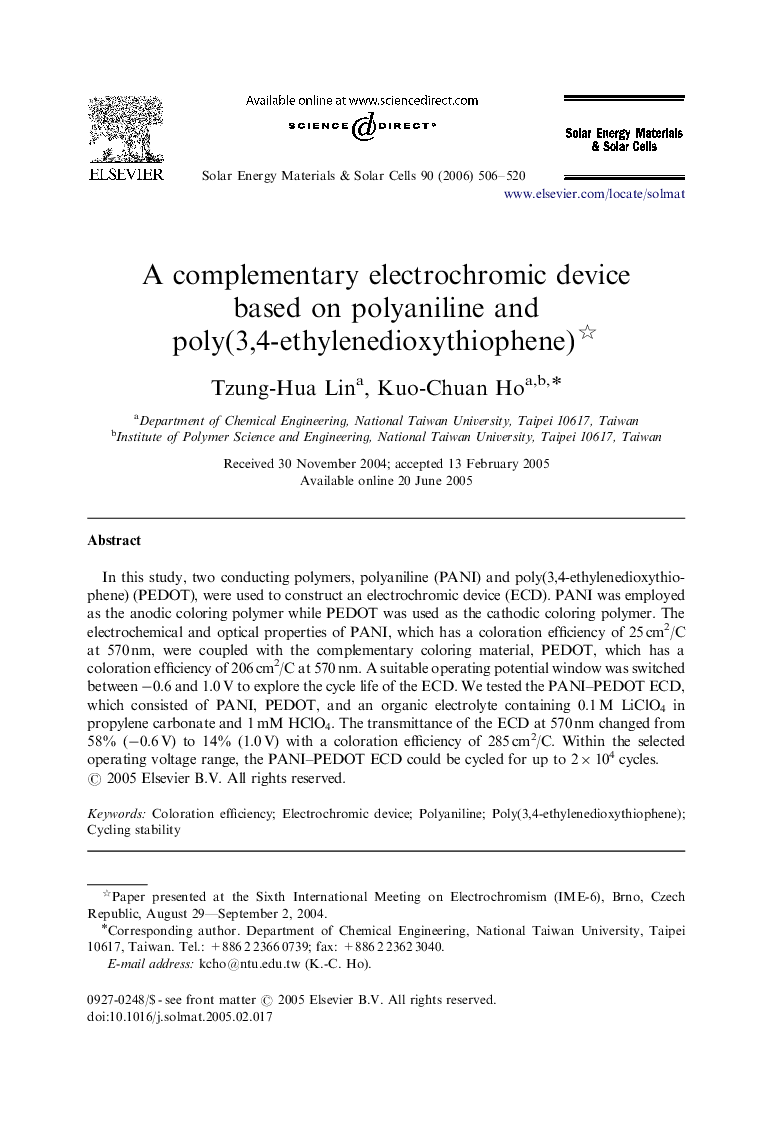| Article ID | Journal | Published Year | Pages | File Type |
|---|---|---|---|---|
| 80866 | Solar Energy Materials and Solar Cells | 2006 | 15 Pages |
In this study, two conducting polymers, polyaniline (PANI) and poly(3,4-ethylenedioxythiophene) (PEDOT), were used to construct an electrochromic device (ECD). PANI was employed as the anodic coloring polymer while PEDOT was used as the cathodic coloring polymer. The electrochemical and optical properties of PANI, which has a coloration efficiency of 25 cm2/C at 570 nm, were coupled with the complementary coloring material, PEDOT, which has a coloration efficiency of 206 cm2/C at 570 nm. A suitable operating potential window was switched between −0.6 and 1.0 V to explore the cycle life of the ECD. We tested the PANI–PEDOT ECD, which consisted of PANI, PEDOT, and an organic electrolyte containing 0.1 M LiClO4 in propylene carbonate and 1 mM HClO4. The transmittance of the ECD at 570 nm changed from 58% (−0.6 V) to 14% (1.0 V) with a coloration efficiency of 285 cm2/C. Within the selected operating voltage range, the PANI–PEDOT ECD could be cycled for up to 2×104 cycles.
